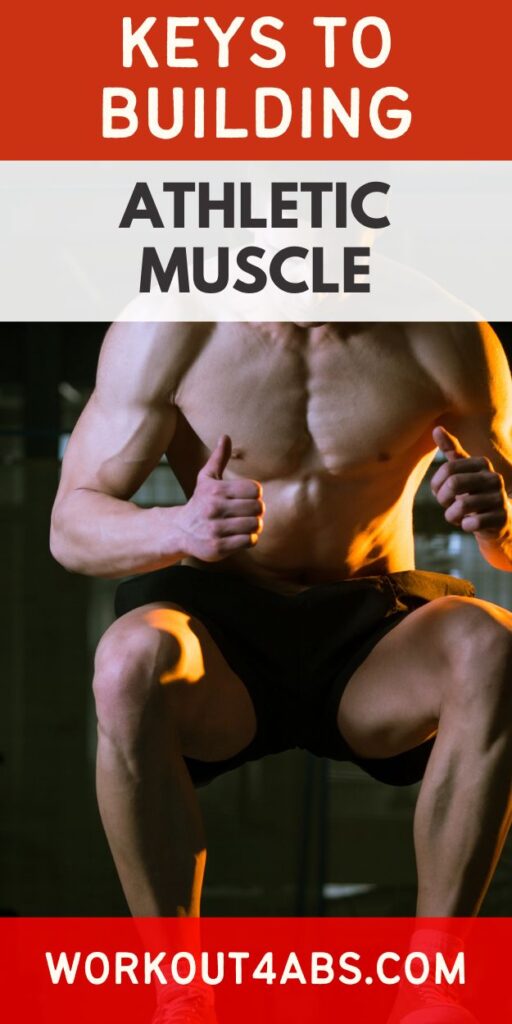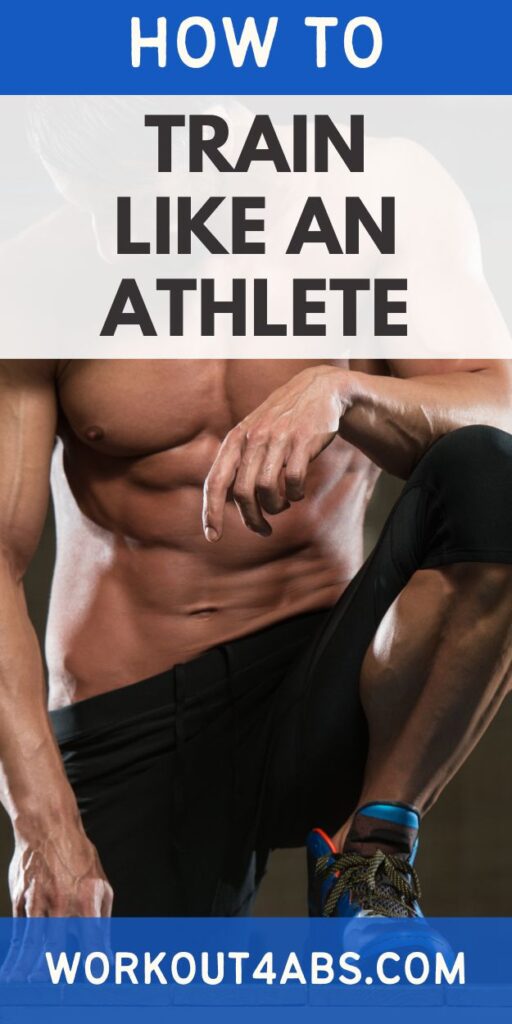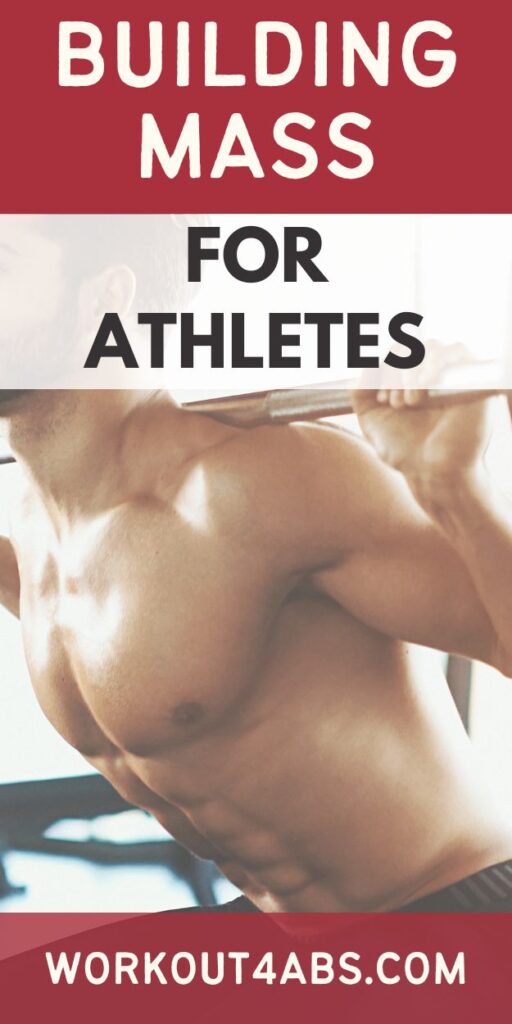Athlete vs bodybuilder. In the realm of fitness and training, the pursuit of hypertrophy—the increase in muscle size—varies significantly between bodybuilders and athletes. This article delves into the contrasting objectives of these two groups, shedding light on how their distinct goals shape their training methodologies and outcomes.
Hypertrophy for Athletes vs. Bodybuilders
Bodybuilders:
- Aesthetics and Symmetry: Bodybuilders prioritize aesthetics and muscle symmetry. They aim to develop a visually pleasing physique with well-defined and proportionate muscles.
- Maximizing Muscle Mass: Their primary goal is to build as much muscle mass as possible in all major muscle groups. This pursuit of muscle size is often called “bulking.”
- Nutritional Focus: Nutrition plays a central role in bodybuilding. Bodybuilders follow strict dietary regimens to control body fat percentage and optimize muscle growth.
- Competition-Oriented: Bodybuilders often compete in bodybuilding competitions, where their physique is judged based on criteria like muscle size, definition, and overall presentation.
- Isolation Exercises: They incorporate a wide variety of isolation exercises targeting specific muscle groups to create a balanced and sculpted appearance.
Athletes:
- Sport-Specific Goals: Athletes engage in hypertrophy training to improve sport-specific performance. They focus on enhancing speed, power, and strength, which directly contribute to their success in their respective sports.
- Functional Hypertrophy: Muscle growth in athletes is aimed at enhancing functional strength and power, translating into improved sport-specific skills and movements.
- Training Load Transition: Hypertrophy training for athletes is a phase that allows them to accommodate higher training volumes or loads. It lays the foundation for later sport-specific training.
- Periodization: Athletes often use periodization, a systematic approach to training, to prepare for different phases of their sports season, which may include hypertrophy, strength, and power phases.
- Nutrition for Performance: While nutrition is essential for athletes, it is geared toward fueling their sport-specific performance, maintaining an optimal body composition for their sport, and aiding recovery.
In summary, bodybuilders focus on aesthetics, muscle size, and visual appeal, while athletes use hypertrophy training as a means to enhance sport-specific performance, speed, power, and strength. Athletes aim to translate their muscle mass into functional advantages on the field or in their chosen sport, highlighting the divergent goals and approaches of these two groups.
If you enjoyed these tips, please save this pin to your Pinterest Board.

3 Main Differences Between Hypertrophy Training for Bodybuilders vs Athletes
1) Exercise Selection
The difference in exercise selection between bodybuilders and athletes is primarily driven by their distinct goals and training priorities:
Bodybuilders:
- Stable Movements: Bodybuilders often prioritize exercises with stable and controlled movements. These exercises allow them to isolate specific muscle groups effectively and create substantial muscle fatigue.
- High Sets and Reps: Bodybuilders typically perform higher sets and repetitions (reps) to induce hypertrophy (muscle growth). The stable movements and isolation exercises allow them to target a particular muscle group intensively, leading to muscle exhaustion and stimulation for growth.
- Muscle Isolation: They often select exercises that isolate individual muscle groups, such as bicep curls or leg extensions. This isolation helps in developing well-defined and balanced muscle groups for aesthetics.
Athletes:
- Functional Movements: Athletes focus on exercises that mimic the movements and demands of their sport. These exercises are often functional and sport-specific, moving outside the sagittal plane to include lateral and rotational movements.
- Multi-Planar Movements: Athletes train in multiple planes of motion (sagittal, frontal, and transverse) to enhance their overall athleticism and movement capabilities. This variety prepares them for the diverse challenges of their sport.
- Sport-Specific Drills: They incorporate sport-specific drills and exercises that closely resemble the movements required in their athletic endeavors. These drills improve agility, speed, coordination, and sport-specific skills.
- Balanced Development: While athletes still seek muscle development, they aim for a balanced approach across muscle groups. This balance ensures optimal function and reduces the risk of injuries related to muscle imbalances.
In summary, bodybuilders prioritize stable, isolation exercises to target specific muscle groups and induce muscle fatigue, with the primary goal of aesthetics and muscle size. In contrast, athletes choose exercises that are functional, sport-specific, and multi-planar to improve their performance in various athletic movements and skills. Athletes focus on functional strength and athleticism, rather than aesthetics alone.
2) Proximity to Failure
The difference in training intensity and recovery strategies between bodybuilders and athletes is crucial and stems from their distinct goals and training priorities:
Bodybuilders:
- Training Close to Failure: Bodybuilders often train very close to muscular failure, pushing their muscles to the point where they can no longer complete another repetition with proper form. This intensity is key to stimulating muscle hypertrophy.
- High Training Volume: They typically perform a high volume of sets and repetitions for each muscle group during a single workout. This approach aims to induce significant muscle fatigue and metabolic stress, both of which contribute to muscle growth.
- Muscle Isolation: Bodybuilders often follow a muscle group or body part split routine, targeting specific muscles intensely in each session. This allows them to isolate and work on individual muscle groups with precision.
- Shorter Recovery Periods: Bodybuilders may have shorter recovery periods between sets and exercises, as their goal is to maximize time under tension and metabolic stress within the muscle.
- Emphasis on Muscle Hypertrophy: Muscle hypertrophy is the primary objective for bodybuilders. They are less concerned with sport-specific performance, agility, or motor learning.
Athletes:
- Balanced Recovery: Athletes prioritize recovery to ensure they can perform optimally in their sport. They avoid pushing themselves to complete muscle failure to prevent excessive fatigue that could hinder on-field performance.
- Spread Training Volume: Training volume is spread throughout the week to allow for adequate recovery between sessions. This approach ensures that athletes can maintain their strength, speed, and power over time without overtraining.
- Functional Movements: Athletes often engage in functional movements and sport-specific drills rather than isolating individual muscle groups. This helps them develop motor skills, coordination, and sport-specific movements.
- Longer Recovery Periods: Athletes incorporate longer rest intervals between sets and exercises to maintain the quality of their training and avoid overexertion.
- Sport-Specific Skills: Their training focuses on improving sport-specific skills, such as agility, sprinting, jumping, and coordination. Developing new motor patterns and enhancing sport-specific performance is a priority.
In summary, bodybuilders train closer to muscular failure, with a focus on inducing muscle hypertrophy through high-intensity, high-volume workouts. Athletes, on the other hand, prioritize balanced recovery, spreading training volume, and optimizing sport-specific performance. They avoid excessive fatigue to maintain their abilities on the field, emphasizing skill development and motor learning.
If you enjoyed these tips, please save this pin to your Pinterest Board.

3) Training Split/Conditioning
The difference in time allocation between a bodybuilder and an athlete when it comes to training hours reflects their respective training priorities and goals:
Bodybuilder:
- Optimizing Body Composition: A bodybuilder’s primary goal is to optimize body composition, which involves building muscle mass while minimizing body fat percentage. Achieving this goal requires a significant amount of time in the gym to perform high-volume resistance training sessions.
- Muscle Hypertrophy Focus: Bodybuilders often prioritize hypertrophy-focused resistance training, which means they dedicate a substantial portion of their gym time to lifting weights with the intent of stimulating muscle growth. This typically involves multiple sets and repetitions for various muscle groups.
- Limited Time for Conditioning: Given the emphasis on resistance training and muscle development, bodybuilders may have limited time available for energy system development or conditioning work. Their primary focus is on aesthetics and muscle size, so they might not allocate as much time to cardiovascular conditioning.
Athlete:
- Sport-Specific Conditioning: Athletes prioritize sport-specific conditioning to improve their performance on the field or in their sport. This includes activities like speed drills, agility training, plyometrics, and sport-specific endurance work.
- Balancing Strength and Conditioning: While athletes also engage in strength training to enhance their power, strength, and skill development, they recognize the importance of a balanced approach that includes conditioning. This balance ensures they are physically prepared for the demands of their sport.
- Efficient Use of Time: Athletes aim to use their training hours efficiently to address both strength and conditioning needs. They often allocate dedicated time for each aspect, maximizing the effectiveness of their training sessions.
In summary, the difference in time allocation between bodybuilders and athletes reflects their distinct training goals. Bodybuilders spend more time on resistance training to optimize body composition and muscle size, while athletes balance their strength training with sport-specific conditioning to excel in their chosen sport. Athletes recognize the importance of a well-rounded approach to physical preparation, including cardiovascular conditioning and skill development.
If you enjoyed this discussion on athlete vs bodybuilder and would like to keep it close to you at any time, just save this pin to your Pinterest Board.

Home › Workout for Athletes ›Core Exercises for Athletes